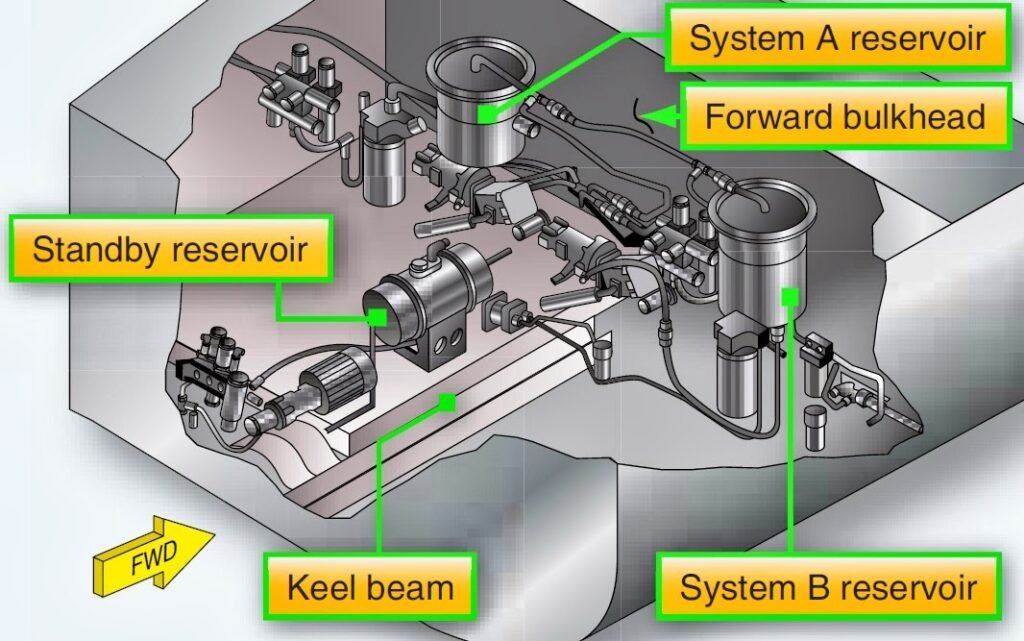Best Practices for Using Skydrol in Aircraft Hydraulic Systems

Aircraft hydraulic systems are important to safe and efficient aircraft flight operations, and the selection of hydraulic fluid directly affects system performance. Skydrol aviation hydraulic fluid is an industry-trusted solution to be used with modern hydraulic systems with their outstanding fire-resistant properties. Hydraulic systems are properly practiced in order to prevent contamination, minimize wear, and operate at optimum functionality to reduce maintenance needs and improve safety. Below are some best practices for using Skydrol in aircraft hydraulic systems that will maintain system integrity and reliability.
1. Use the Recommended Fluid Type
Preserving the robustness and efficiency of aircraft systems means that hydraulic fluids are utilized strictly in compliance with their industry-designated standard. Various airplanes and aircraft require different kinds of fluids, and it is too dangerous to switch to the wrong kind of fluids, leading to seal destruction, corrosion, and failure of hydraulic systems. Aviation uses Skydrol fluid due to being fire resistant and outperforming other hydraulic fluids.
It is built to the most exacting aviation specifications, and even in the harshest environments, it performs at peak efficiency. Before using it, check the aircraft’s maintenance handbook to make sure it is compatible. Selecting suitable fluid not only extends the lifespan and efficiency of hydraulic systems but also aids in the proper flight operations with ease and affordability.
2. Store the Fluid Properly
It is critical to store Skydrol hydraulic fluid correctly due to its safety and performance qualities. Be careful not to let any moisture, dirt, or other debris get into the fluid while storing it because it is extremely susceptible to contamination. Extreme heat can destroy the chemical composition of anything, making it less effective or even damaging hydraulic systems.
It is therefore necessary to maintain storage areas clean, dry and within a stable temperature environment to allow for longevity. They should also be stored upright to minimize the risk of leaks and inspected regularly for signs of damage like cracks or leaking seals. By following these storage best practices, the fluid integrity is protected, and unnecessary maintenance costs and operational risks related to fluid degradation are avoided.
3. Train Personnel on Proper Handling
To ensure safety and maintain operational efficiency, it’s vital to receive proper training on how to handle Skydrol. Because of its proprietary chemistry, Skydrol has specific use-handling requirements. The material should be handled properly, and staff should get training on the specified parameters. Workers must wear personal protective equipment (PPE), including gloves, safety goggles, and protective clothes, to avoid direct skin or eye contact. To lower environmental pollution, it should also teach employees how to correctly dispose of what stays in order and clean spills. Maintaining the integrity of hydraulic systems and ensuring regulatory compliance is built into the process by ensuring that team members know enough about Skydrol’s properties and its safety protocols to reduce the risk of accidents.
4. Monitor System Health Regularly
Regular monitoring of hydraulic systems is necessary to ensure proper performance without unnecessary failure and cost. Hoses, seals, and fittings are inspected regularly to find wear, cracks, or leaks that may create leaks in the system and jeopardize its operation. If contaminated with debris, moisture, or other fluids, Skydrol’s performance may degrade; using high-quality filters to retain fluid purity is critical.
Set up a schedule to periodically sample fluid for analysis of contamination or chemical degradation. With this proactive approach, you are able to proactively identify issues that could escalate, such as potential corrosion or buildup, which can affect the efficiency of the system. Further, stick to the manufacturer’s maintenance schedule for fluid replacement to keep the hydraulic system running on fresh, effective fluid.
5. Address Spills and Leaks Immediately
System integrity and safety depend on Skydrol spill and leak treatment. If not cleaned quickly, Skydrol can corrode paint, metal, and some rubber and plastic. Neutralize with hydraulic fluid-approved cleaners and thoroughly remove the spilled fluid. Workers must use PPE to avoid skin or eye discomfort. To prevent further releases and environmental harm, the spill should be stopped swiftly and disposed of according to local laws and standards. This reduces long-term equipment damage and makes work safer. Addressing leaks can also help you reduce fluid loss, prevent it from worsening, and identify systemic issues before they become major issues.
Conclusion
To use Skydrol aviation hydraulic fluid successfully, you must follow the recommended procedure. Proper selection, storage, handling, and system maintenance minimize risks and ensure the system’s best functioning. The use of these principles is very necessary in order to guarantee the secure and effective operation of aircraft hydraulic systems, as well as the long-term safety and dependability of these systems.






